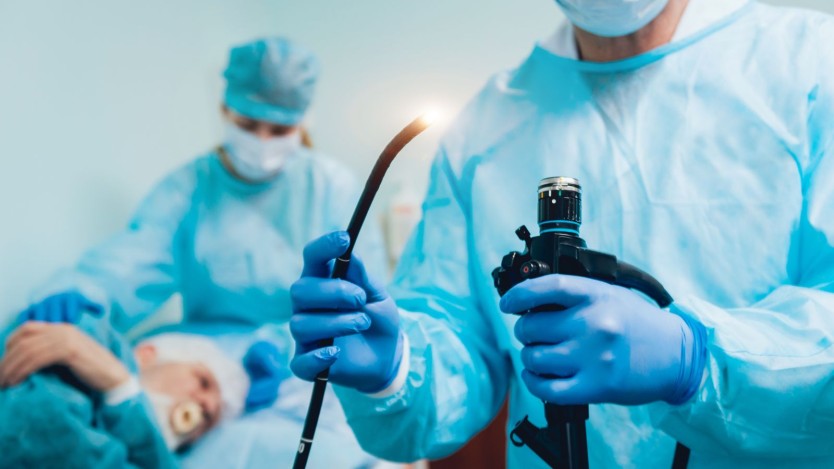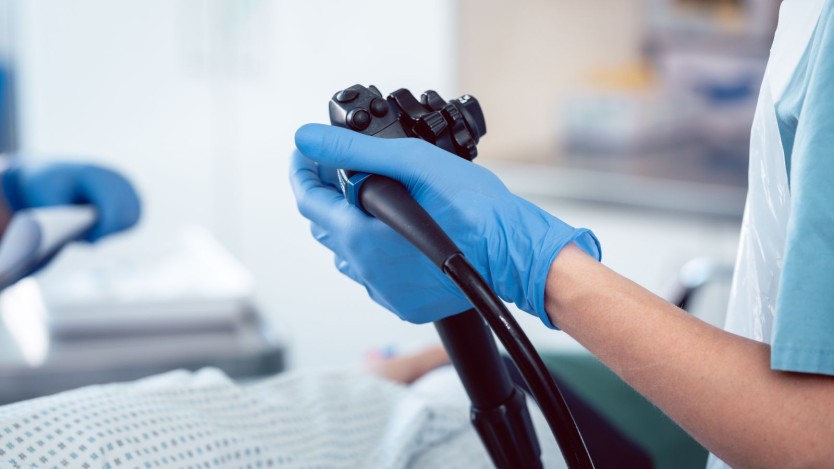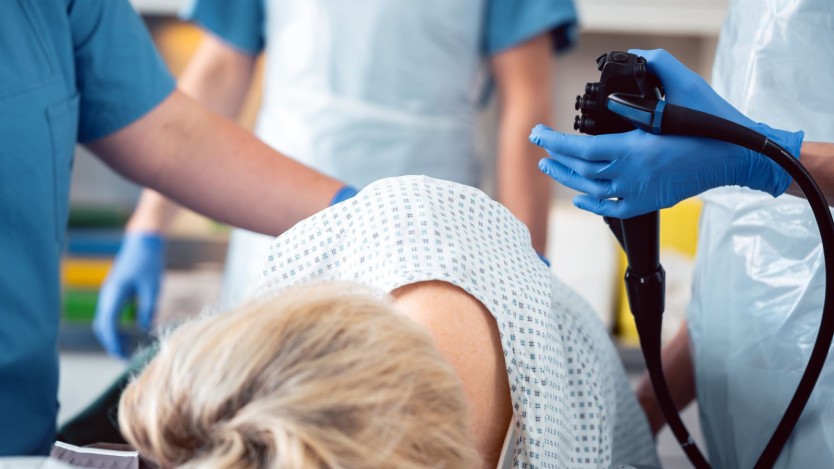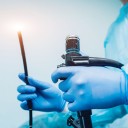Colonoscopy: what it is used for, type of anaesthesia and problems it diagnoses

- Colonoscopy
- What is a colonoscopy for?
- What does a colonoscopy involve?
- Colonoscopy and diseases it helps to diagnose
- Anaesthesia during colonoscopy
- After the colonoscopy
- Risks of the colonoscopy
- Colon capsules as an alternative to colonoscopy
- Conclusions on colonoscopy
- Colonoscopy is a diagnostic technique performed in the operating theatre with the patient under sedation.
- Colonoscopy allows the inside of the anal canal and intestines to be examined for serious problems.
- Recovery after a colonoscopy does not go beyond a little discomfort in the following hours and perhaps a couple of days.
Colonoscopy
Colonoscopy is a common method of examining the large intestine and part of the small intestine. This is achieved by inserting the colonoscope, a long, flexible, tube-shaped tool with a micro-camera at the end, through the rectum.
The colonoscope has several sections inside it through which various instruments can be used to facilitate the performance of diagnostic tests and the removal of intestinal tumours or polyps.

Colonoscopy
Purchase your medical voucher easily under Operarme's guarantees and select your nearest hospital.
For a colonoscopy to be performed, it is important that the bowel is not stained with faecal debris. To prepare the colon, a series of laxatives are usually taken both orally and by enemas. Laxatives cause a strong diarrhoea that cleanses the colon and prepares it for the colonoscopy.
What is a colonoscopy for?

Colonoscopy is necessary to:
- Examining the walls of the large and small intestine, colon and ileum.
- Performing biopsies and removing polyps or tumours.
- Preventing colorectal cancer.
- Diagnose changes in defecation habits.
- Check for the development of colitis, an inflammatory bowel disease.
- Diagnose unexplained abdominal symptoms.
What does a colonoscopy involve?
The colonoscopy is performed while the patient is lying on his or her side. A specialist will administer sedation and monitor vital signs. The examination will not begin until the patient is prepared, relaxed and the sedation has taken effect.
After thoroughly lubricating the colonoscope, the doctor inserts it into the anus. The colonoscope advances slowly and gently.
To facilitate the passage of the colonoscope, carbon dioxide gas is blown in. The physician may ask the patient to perform some kind of movement as another method to facilitate the movement of the colonoscope.

During the examination, the physician can identify suspicious lesions or polyps. Colonoscopy allows both removal of the polyp and biopsy of the lesion for diagnosis.
The colonoscopy itself can take between 20 and 60 minutes.
During the course of the test it may become apparent that the previous cleansing of the colon has not been sufficient, so the doctor will stop the colonoscopy and make a new appointment.
Colonoscopy and diseases it helps to diagnose
Colonoscopy and haemorrhoids
Haemorrhoids are also called varicose veins of the anal canal and arise as lumps due to swelling or inflammation of the blood vessels in the anal canal. Haemorrhoids can develop internally or externally. Internal haemorrhoids are swollen veins located inside and along the anal canal.
Rarely do these haemorrhoids cause pain or visible inflammation. They can be seen as blood stains in the stool. Because of this quality of internal haemorrhoids, the role of colonoscopy is crucial in diagnosing and treating them.

Colonoscopy
Purchase your medical voucher easily under Operarme's guarantees and select your nearest hospital.
Colonoscopy and anal fissures
Colonoscopies while having an anal fissure are possible. The surface of the colonoscope is smooth and soft and therefore does not in itself represent a problem or a worsening of pain. The laxative process prior to the colonoscopy can affect the fissure and may even "twist" it.
Colonoscopy and fistulas
As we have already said in the case of anal fissures, the surface of the colonoscope is sufficiently comfortable for the rectum not to affect fistulas in the event that they are present. The only drawback can be found in the prior laxative process.
Anaesthesia during colonoscopy
The usual type of anaesthesia during a colonoscopy is sedation. This means the use of a series of drugs that help the patient to relax and not suffer pain. Sedation is given through an intravenous line or an intramuscular injection. The patient remains conscious at all times, although they may not be able to speak.
Sedation may be light or deep sedation. The choice of one type of sedation or the other depends on the patient's tolerance to the pain and discomfort of colonoscopy. It is advisable to apply the lowest possible level of sedation in order to be able to perform the examination as reliably as possible, while ensuring minimal discomfort for the patient.

The effects of sedation take some time to wear off completely. A patient may stay in the clinic for about 1 to 2 hours after colonoscopy. Even so, full recovery usually takes place the next day. This is why it is always recommended to be accompanied to colonoscopies. It is not recommended to drive vehicles or operate heavy machinery on the same day as the examination.
Although it is an uncomfortable method, in many hospitals it is performed without any anaesthesia.
After the colonoscopy
At the end of a colonoscopy, the physician may have prescribed a specific diet for the patient for the following days. The appearance of blood in the first stool is also common. If the blood in the stool is excessive or continues for too long a period of time, a doctor should be contacted.

Colonoscopy
Purchase your medical voucher easily under Operarme's guarantees and select your nearest hospital.
Due to the amount of carbon dioxide gas used to facilitate the passage of the colonoscope, flatulence to expel the gas usually occurs one to two hours after the examination. Rest is always recommended for the rest of the day.
Results are quick and are usually given to the patient on the same day of the procedure.
Risks of the colonoscopy
The process of performing a colonoscopy is safe, but like any other treatment it can have some risks or drawbacks. Anal bleeding and perforation of the colon are the most likely drawbacks, although complications are rare because doctors are so used to performing this procedure.
Bleeding may occur during the colonoscopy or even two weeks after the procedure. If any of these problems occur, the specialist will be in charge of stopping the bleeding.
Less common drawbacks of colonoscopy include diverticulitis, anal pain, infection or abdominal discomfort. Cardiovascular complications such as low blood pressure, irregular heartbeat or heart attacks may also occur.
Colon capsules as an alternative to colonoscopy
Colon capsules are a new method of visualising the inside of the colon. The use of capsules involves a more intensive cleansing and laxative process than colonoscopy. Although it allows an optimal view of the colon and intestines, if any polyps or other abnormalities are found, colonoscopy is necessary to treat them.
Due to this fact, we always recommend the application of a colonoscopy over the use of colon capsules.
Conclusions on colonoscopy
Colonoscopy is a safe and very useful screening technique to diagnose and prevent problems in both intestines.
It is a very useful technique for taking biopsies or removing polyps from the anal rectum. Colonoscopy is compatible with anal fistulas and fissures, although the laxative cleansing process beforehand can be inconvenient. Although it may be uncomfortable for the patient, thanks to sedation it is practically painless. Side effects related to the technique or the anaesthesia are mild.
If you are looking for a colonoscopy, please contact us through our contact form and we will try to help you.

Colonoscopy
Purchase your medical voucher easily under Operarme's guarantees and select your nearest hospital.
Medical disclaimer: All the published content in Operarme is intended to disseminate reliable medical information to the general public, and is reviewed by healthcare professionals. In any case should this information be used to perform a diagnosis, indicate a treatment, or replace the medical assessment of a professional in a face to face consultation. Find more information in the links below:
